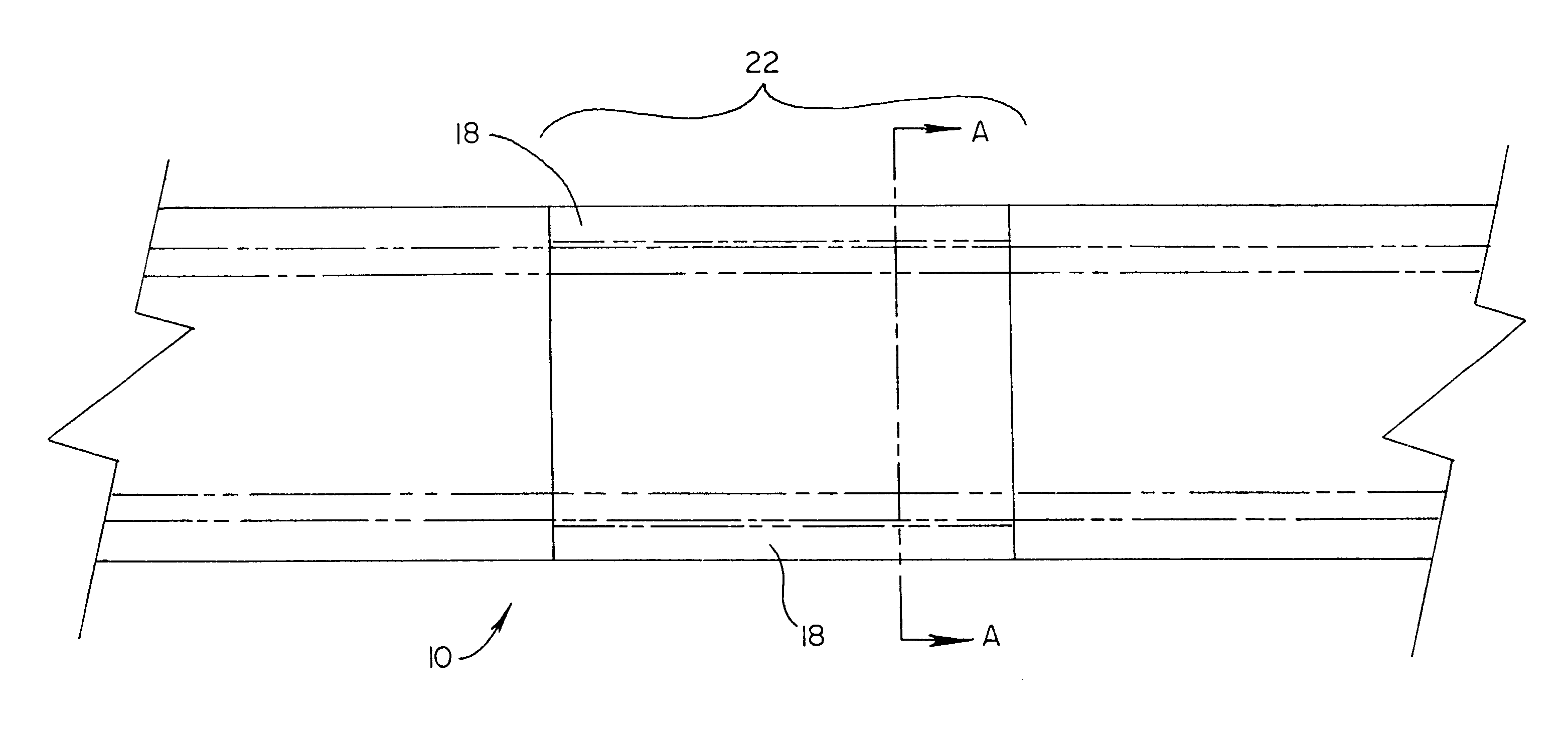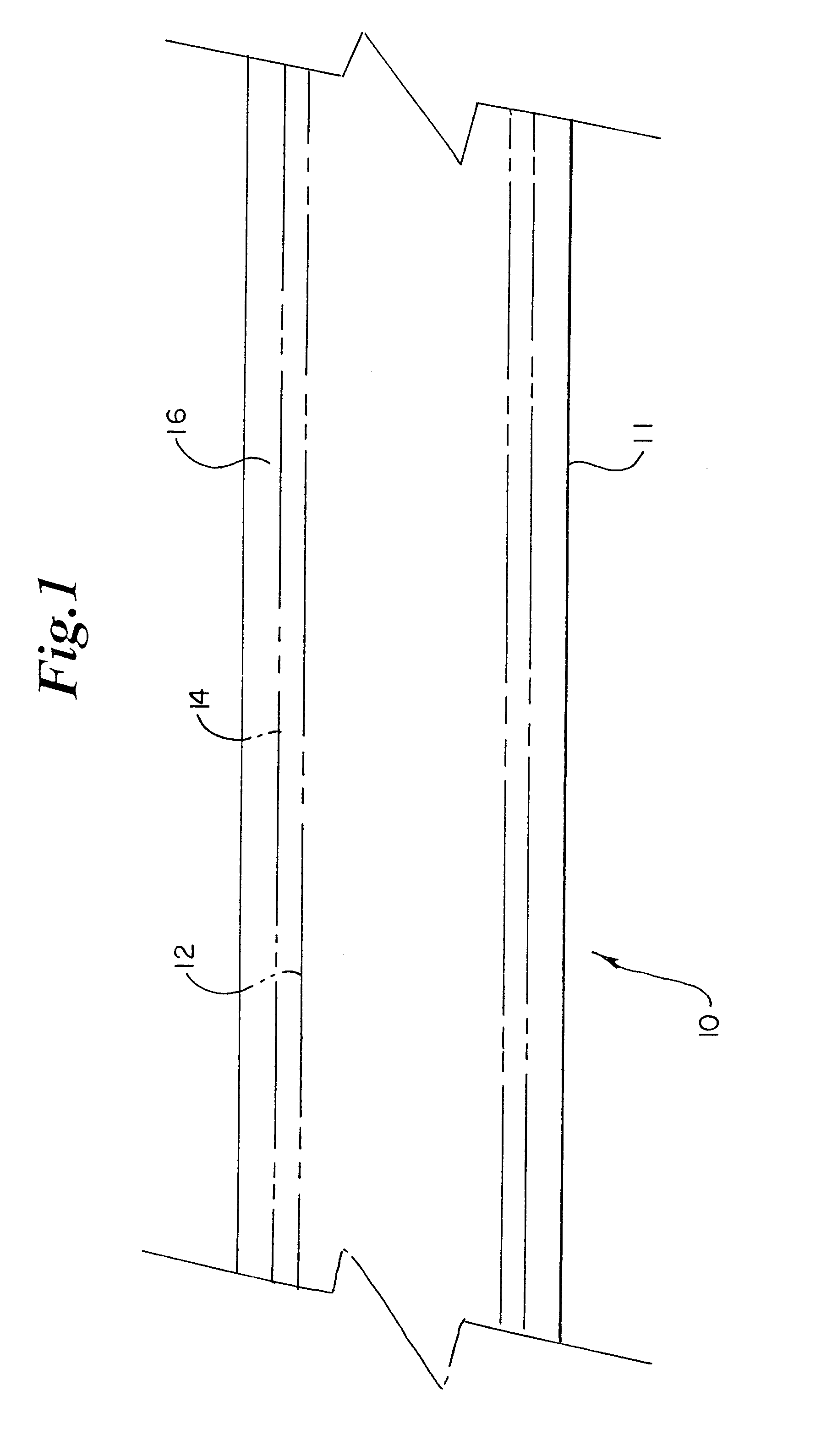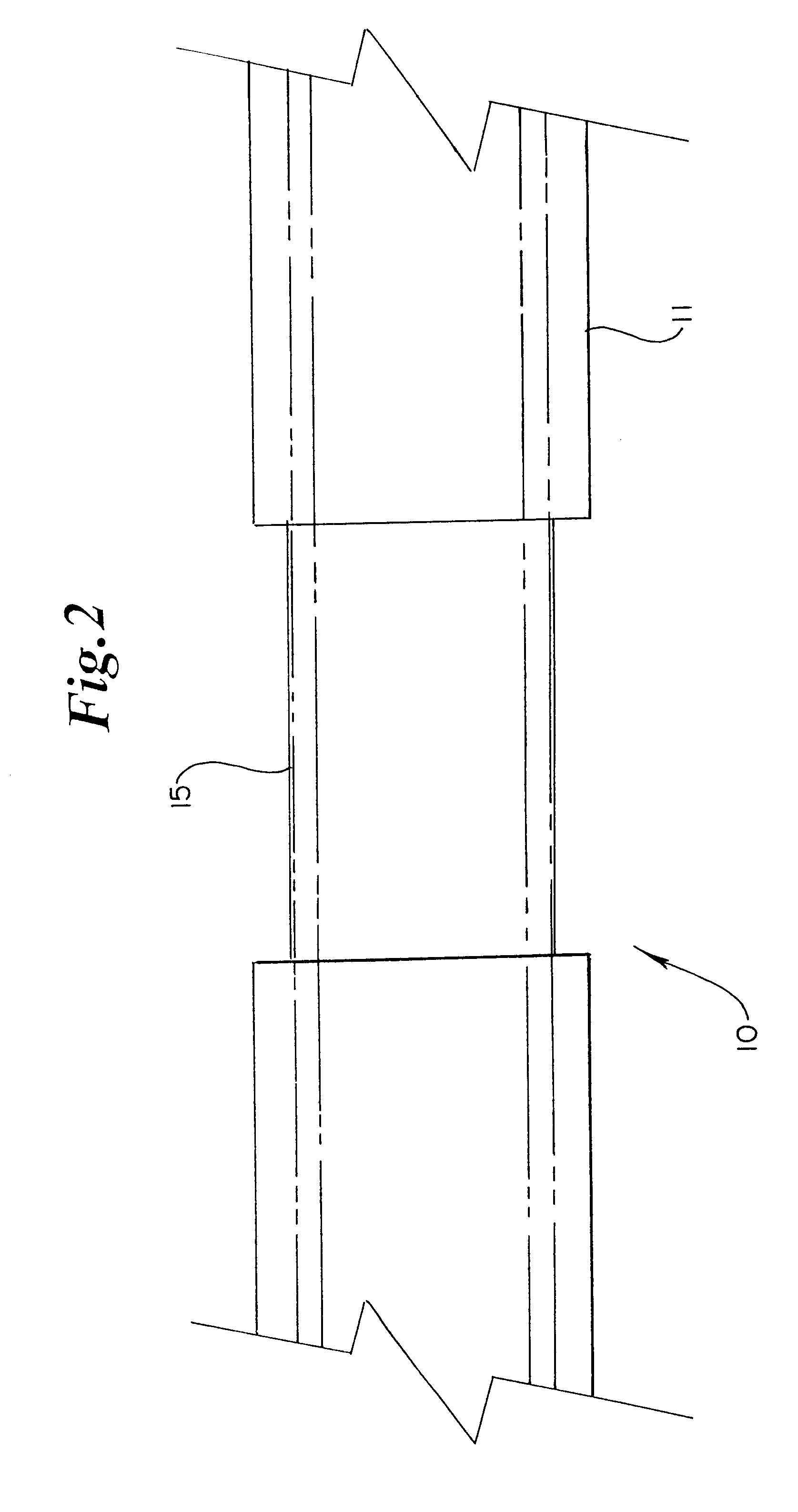Guide catheter having selected flexural modulus segments
a flexural modulus and segment technology, applied in the direction of flexible pipes, catheters, coatings, etc., can solve the problems of increasing the tendency for back-out again, increasing the back-out frequency, and the device would be very traumatizing to the patient's arteries, so as to increase the rigidity prevent the back-out and increase the flexibility of the guiding catheter
- Summary
- Abstract
- Description
- Claims
- Application Information
AI Technical Summary
Benefits of technology
Problems solved by technology
Method used
Image
Examples
Embodiment Construction
FIG. 1 shows a section of a catheter 10 which is preferably a guiding catheter. Catheter shaft 11 is comprised of an inner tube 12 which is surrounded by a support member 14. Support member 14 is then surrounded by an outer tube 16. Inner tube 12 is represented in FIG. 1 by dashed lines and the support member 14 is represented by a dotted line.
In the preferred embodiment, inner tube 12 is a thin walled PTFE (polytetrafluoroethylene) tube. This creates a smooth, friction-free surface for the passage of other devices through the inner tube. Support member 14 is a 304 stainless steel wire, wound in a braided pattern around inner tube 12. Alternatively, support member 14 could also be comprised of polymer fibers. Outer tube 16 is a polymer jacket which is placed through an extrusion process onto combined layers of inner tube 12 and support member 14. Preferably, outer tube 16 is comprised of PEBAX®, a polyether block amide (PEBA) available from ATOMCHEM POLYMERS, Birdsboro, Pa. FIG. 6 s...
PUM
| Property | Measurement | Unit |
|---|---|---|
| Flexibility | aaaaa | aaaaa |
| Modulus | aaaaa | aaaaa |
Abstract
Description
Claims
Application Information
 Login to View More
Login to View More - R&D
- Intellectual Property
- Life Sciences
- Materials
- Tech Scout
- Unparalleled Data Quality
- Higher Quality Content
- 60% Fewer Hallucinations
Browse by: Latest US Patents, China's latest patents, Technical Efficacy Thesaurus, Application Domain, Technology Topic, Popular Technical Reports.
© 2025 PatSnap. All rights reserved.Legal|Privacy policy|Modern Slavery Act Transparency Statement|Sitemap|About US| Contact US: help@patsnap.com



